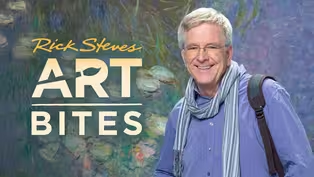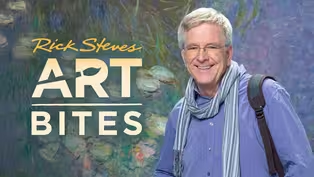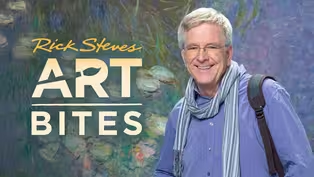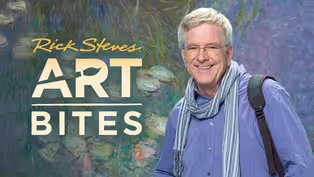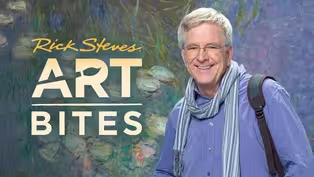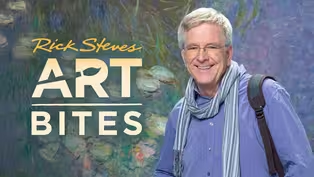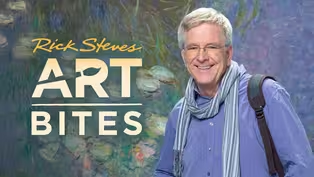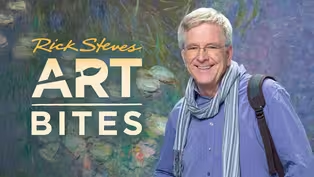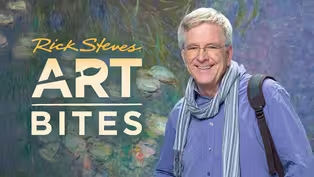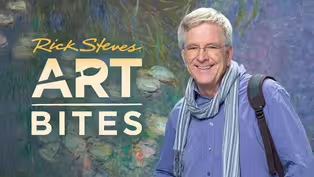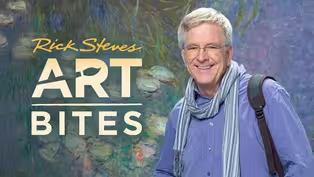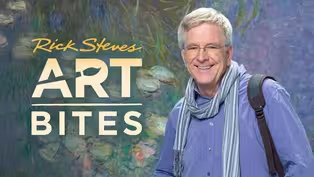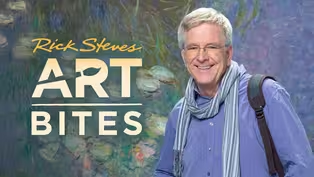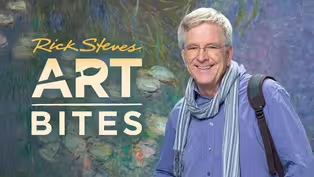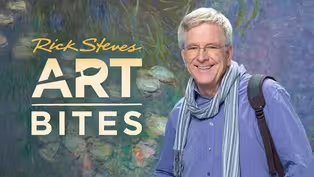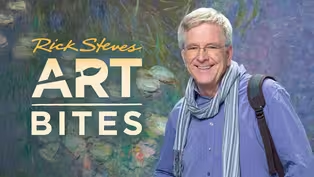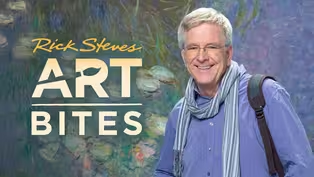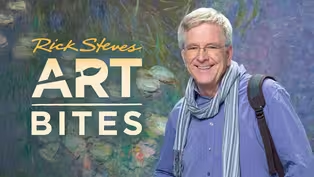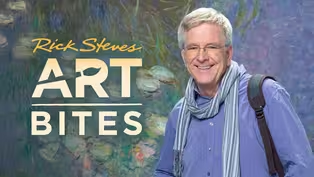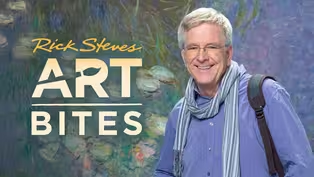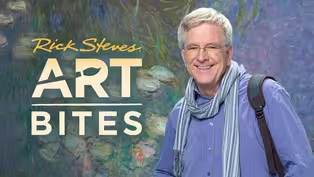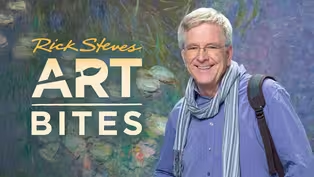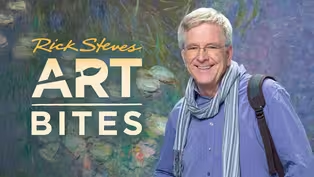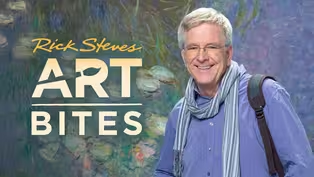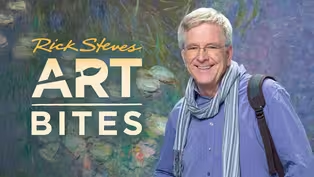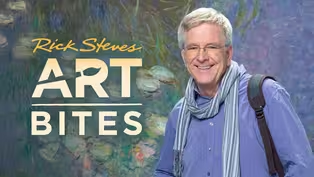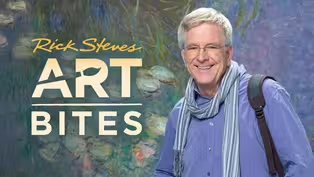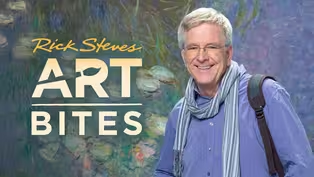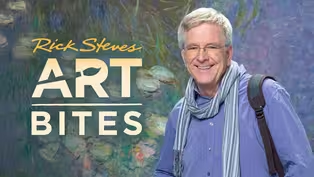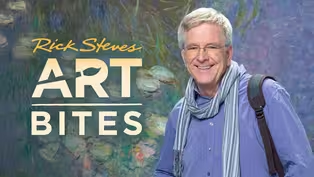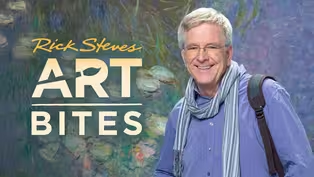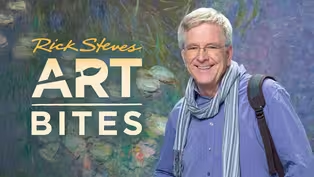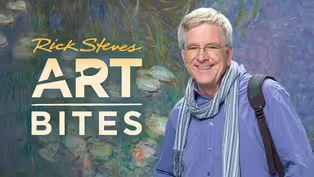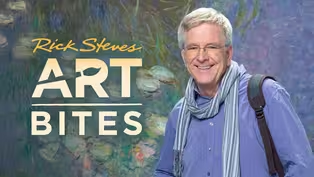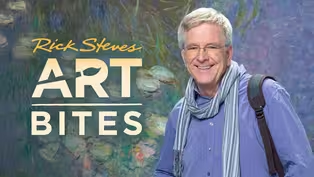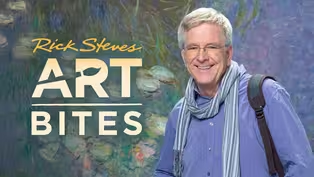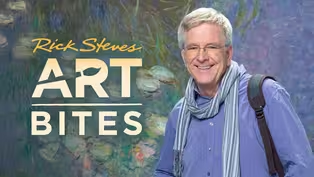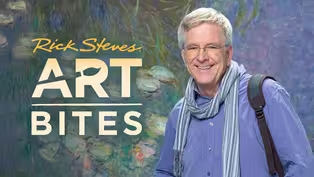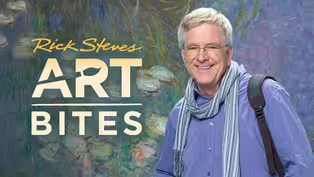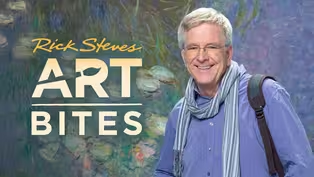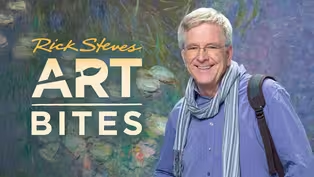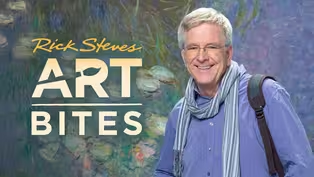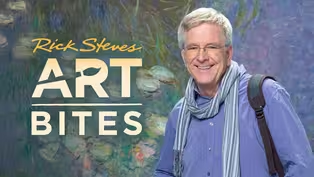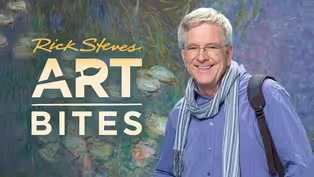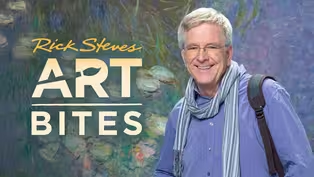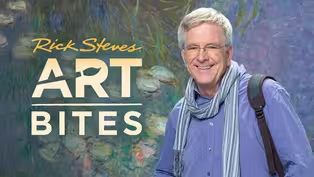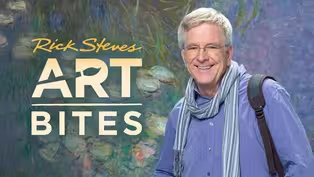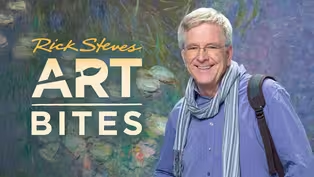Rick Steves' Europe
Art Bites 170: Neoclassical Art and Architecture, the Age of Enlightenment
Clip | 5m 49sVideo has Closed Captions
Neoclassical was a stern, no-frills style that celebrated a new age of science and reason.
Baroque excesses were countered by the Revolution, the Enlightenment, and a stern, no-frills art that celebrated a new age of science and reason. Neoclassical art and architecture (called Georgian in Britain) spread from France to Denmark, Finland, and beyond.
Problems playing video? | Closed Captioning Feedback
Problems playing video? | Closed Captioning Feedback
Distributed nationally by American Public Television
Rick Steves' Europe
Art Bites 170: Neoclassical Art and Architecture, the Age of Enlightenment
Clip | 5m 49sVideo has Closed Captions
Baroque excesses were countered by the Revolution, the Enlightenment, and a stern, no-frills art that celebrated a new age of science and reason. Neoclassical art and architecture (called Georgian in Britain) spread from France to Denmark, Finland, and beyond.
Problems playing video? | Closed Captioning Feedback
How to Watch Rick Steves' Europe
Rick Steves' Europe is available to stream on pbs.org and the free PBS App, available on iPhone, Apple TV, Android TV, Android smartphones, Amazon Fire TV, Amazon Fire Tablet, Roku, Samsung Smart TV, and Vizio.
Providing Support for PBS.org
Learn Moreabout PBS online sponsorshipRococo art was a symptom of an excessive decadence among Europe█s increasingly out-of-touch elites.
But the world was changing.
There was a growing belief that science and reason could lead to progress.
This led to a new and ultimately revolutionary age, the Age of Enlightenment.
Science was booming as new frontiers-- from gravity and electricity to the solar system-- were explored.
New technology was practically an art form in itself, with jeweled microscopes, intricate time pieces, and finely crafted telescopes.
People were fascinated by the wonders of the natural world.█And philosophers even floated the radical idea that ordinary people could rule themselves— planting the seeds of modern democracy.
By the mid-1700s, the aristocracy was going one way, but the rest of society was headed another.
This reaction to the excess of the age led to an enlightened style of art which stripped out the Baroque drama and Rococo frills.
As in the Renaissance, it looked back to classical times for inspiration█ to ancient Greece and Rome.
And because it was a new version, it was called “Neo-Classical.” Architects revived the style of classical temples.
Using columns, triangular pediments, and soaring domes, these buildings— with their clean, straight lines— looked ancient but were actually modern, built in the 17 and 1800s.
They were Neo-classical.
Painters celebrated ancient scenes with clear-eyed realism and sharply-drawn lines.
Greek, Roman, sober and intellectual themes— it█s pure Neoclassicism.
They painted portraits of contemporary Europeans in classic colors and ancient garb.
This young Parisian socialite— reclining on a Roman couch, with a Greek tunic and a Pompeii hairdo— perfectly in vogue.
In sculpture, subjects— like Napoleon█s sister for example— were featured pure and calm as Greek gods— with smooth clean lines carved from the same white marble as the ancients.
Greek myths now came without all the Baroque drama.
This Cupid flutters down to awaken his lover with a kiss.
As their arms intertwine, they form a perfect circle— a circle of love— focusing all the attention on the center of the composition: the charged atmosphere between their anxious lips.
Soon, this classical style could be found all over Europe█ with Greek and Roman inspired facades, stately columns, and logical, grid-planned streets.
Much of London was remade in this style— from palaces... to churches... to museums.
While on the Continent, the art of this period was called Neo-Classical, England named the style after its king, “Georgian.” The neo-classical or “Georgian” style spread across Britain.
Towns like Bath enjoyed a neo-classical make-over.
This circular square feels like an ancient coliseum turned inside out, complete with classical columns— Doric, Ionic, and Corinthian.
Nearby, its Royal Crescent, the first Georgian “condos,” came with a broad promenade perfect for strutting your high society stuff.
With its elegant symmetry and classical ornamentation, progressive residents of Georgian England got to stroll as if the vanguard of an enlightened new age.
And, the Neoclassical style spread to Europe█s far north.
In Helsinki— in the early 1800s— an entire ensemble of buildings— political, religious, and commercial— was designed in this new artistic style.
The cathedral, with its stately dome and statues of twelve apostles, overlooks the city.
With that striking centerpiece, this is perhaps the finest and most cohesive Neoclassical square in Europe.
In Copenhagen, the façade of its cathedral mimics a Greek Temple.
And John the Baptist stands where you█d expect to see some pagan god.
He welcomes worshippers into a world of neoclassical serenity.
With statues of the apostles leading to the altar, the art complements the relative simplicity of Protestant worship.
With its clean, cool lines and focus on reason, Neoclassicism was more than a period of art— it represented a whole new way of thinking.
It stood for Enlightenment, scie
Video has Closed Captions
Clip | 1m 29s | What began as tagging and street graffiti has evolved into a new art form. (1m 29s)
Art Bites 195: Social Realism, the Art of Communism
Video has Closed Captions
Clip | 1m 51s | The art of Communism diligently promoted the heroic symbols of the state as propaganda. (1m 51s)
Art Bites 194: Picasso’s "Guernica"
Video has Closed Captions
Clip | 2m 54s | With the large Cubist-inspired painting, Picasso put a human face on “collateral damage.” (2m 54s)
Video has Closed Captions
Clip | 1m 36s | With heavy outlines and brilliant colors, Chagall celebrated nature and its creator. (1m 36s)
Art Bites 192: Surrealism and Salvador Dalí
Video has Closed Captions
Clip | 2m 34s | Surrealists explored the subconscious painting everyday images in jarring juxtapositions. (2m 34s)
Art Bites 191: Edvard Munch and Expressionism
Video has Closed Captions
Clip | 2m 6s | Expressionism captured emotions, trauma, and cynicism with distorted and garish works. (2m 6s)
Art Bites 190: Romanticism and Romantic Era Painting
Video has Closed Captions
Clip | 2m 43s | Epic, melodramatic canvases, images that stir the emotions, and an embrace of nature. (2m 43s)
Art Bites 189: Pablo Picasso: Cubism, "Guernica," and Much More
Video has Closed Captions
Clip | 5m 14s | Picasso invented Cubism, captured the horror of warfare, and found freedom in abstraction. (5m 14s)
Video has Closed Captions
Clip | 1m 35s | Gustav Klimt, with paintings like “The Kiss” captured a simmering hedonism in Vienna. (1m 35s)
Art Bites 187: Toulouse-Lautrec
Video has Closed Captions
Clip | 1m 46s | Toulouse-Lautrec painted the turn-of-the-century bohemian scene on Paris’ Montmartre Hill. (1m 46s)
Art Bites 186: Modern Art and the Isms of the 20th Century
Video has Closed Captions
Clip | 4m 31s | 20th-century art was a parade of isms: Fauvism, Expressionism, Cubism, Surrealism. (4m 31s)
Art Bites 185: Art Nouveau, Mucha, and Gaudí
Video has Closed Captions
Clip | 5m 3s | Art Nouveau went organic with willowy maidens, melting eaves, and an embrace of nature. (5m 3s)
Art Bites 184: Vincent van Gogh
Video has Closed Captions
Clip | 3m 1s | Van Gogh’s wild brush strokes and vivid colors portrayed the world he felt so intensely. (3m 1s)
Art Bites 183: The Post-Impressionists: Seurat, Cézanne, Gauguin, Van Gogh
Video has Closed Captions
Clip | 3m 51s | Dots, slabs, primitive Tahitian scenes, wild brush strokes, and vivid colors. (3m 51s)
Art Bites 182: Claude Monet and His Waterlilies
Video has Closed Captions
Clip | 2m 10s | The true subject of Monet’s “Waterlilies” is the changing reflections on the pond. (2m 10s)
Art Bites 181: Rodin, Impressionism in Sculpting
Video has Closed Captions
Clip | 1m 27s | Auguste Rodin brought Impressionism to stone with iconic statues like “The Thinker.” (1m 27s)
Art Bites 180: Impressionism, Monet, Renoir, and Degas
Video has Closed Captions
Clip | 6m 20s | The Impressionists revolutionized art with a focus on nature: light, shadow, and color. (6m 20s)
Art Bites 179: Northern Baroque Painting: Hals, Steen, Vermeer
Video has Closed Captions
Clip | 4m 53s | Hals, Steen, Vermeer painted slices of regular life and group portraits of city bigwigs. (4m 53s)
Art Bites 178: Baroque Music, Bernini for Your Ears
Video has Closed Captions
Clip | 2m 5s | This mini piano concert demonstrates how Baroque music can be like Bernini for your ears. (2m 5s)
Art Bites 177: Rubens, a Master Painter of the Northern Renaissance
Video has Closed Captions
Clip | 3m 28s | Rubens painted mythic battles, Catholic miracles, bloody hunts, and “Rubenesque” women. (3m 28s)
Video has Closed Captions
Clip | 1m 53s | Gritty realism, stark lighting, and drama gave Caravaggio’s art an emotional punch. (1m 53s)
Art Bites 175: Bernini and Baroque Sculpture
Video has Closed Captions
Clip | 5m 37s | Rome was Bernini’s gallery where you can see his squares, fountains, and finest statues. (5m 37s)
Art Bites 174: Baroque Art as Propaganda
Video has Closed Captions
Clip | 3m 29s | Baroque art was propaganda for the state or for the Church. (3m 29s)
Art Bites 173: Baroque Art, the Catholic Church, and the Virgin Mary
Video has Closed Captions
Clip | 3m 42s | Pro-Vatican Baroque featured big canvases, dramatic statues, and exuberant architecture. (3m 42s)
Art Bites 172: The Reformation and the Baroque Age
Video has Closed Captions
Clip | 5m 6s | The roots of Baroque go back to the 1500s when it told the story of the religious wars. (5m 6s)
Art Bites 171: Neoclassical Art, the Age of Revolution, and Napoleon
Video has Closed Captions
Clip | 5m 6s | The French Revolution came with art that celebrated liberty, equality, and brotherhood. (5m 6s)
Art Bites 170: Neoclassical Art and Architecture, the Age of Enlightenment
Video has Closed Captions
Clip | 5m 49s | Neoclassical was a stern, no-frills style that celebrated a new age of science and reason. (5m 49s)
Art Bites 169: Rococo Art and Architecture, Baroque Gone Wild
Video has Closed Captions
Clip | 2m 7s | Rococo art featured aristocrats playing in their Baroque palaces and bucolic backyards. (2m 7s)
Art Bites 168: Royal Palaces of the Baroque Age and Versailles
Video has Closed Captions
Clip | 5m 36s | Versailles, with its heavenly painted ceilings, was the ultimate Baroque palace. (5m 36s)
Art Bites 167: Royal Portraits and Velázquez
Video has Closed Captions
Clip | 3m 33s | Painters, such as Velázquez, were paid to make royals look more divine than they were. (3m 33s)
Art Bites 166: Rembrandt, The Great Dutch Master
Video has Closed Captions
Clip | 3m 51s | Rembrandt earned a living painting and told Bible stories with a subtle mastery of drama. (3m 51s)
Art Bites 165: Sandro Botticelli
Video has Closed Captions
Clip | 2m 24s | Botticelli painted big colorful celebrations of the Renaissance like a fertile springtime. (2m 24s)
Art Bites 164: The Medici Family, Patrons of the Florentine Renaissance
Video has Closed Captions
Clip | 3m 27s | The Medici family nurtured and employed the great Florentine Renaissance artists. (3m 27s)
Video has Closed Captions
Clip | 2m 6s | A humble monk, Fra Angelico frescoed exquisite sacred scenes for his monastery. (2m 6s)
Art Bites 162: Early Renaissance Painting: Giotto, Masaccio, Fra Angelico
Video has Closed Captions
Clip | 5m 26s | These painters brought art from medieval two-dimensional to more life-like 3-D. (5m 26s)
Art Bites 161: Donatello and Early Renaissance Statues
Video has Closed Captions
Clip | 3m 12s | The sculptor Donatello gave his proud statues unprecedented realism and emotion. (3m 12s)
Art Bites 160: Renaissance Artists: Ghiberti, Brunelleschi, Donatello
Video has Closed Captions
Clip | 4m 58s | Florence, home of the Renaissance, was also home to three early artistic heroes. (4m 58s)
Art Bites 159: The Renaissance Defined
Video has Closed Captions
Clip | 3m 30s | For two centuries, the Renaissance was an explosion of secular learning, art, and culture. (3m 30s)
Art Bites 158: Hieronymus Bosch and "The Garden of Earthly Delights"
Video has Closed Captions
Clip | 2m 7s | Bosch’s three-paneled masterpiece takes you from earthly delights to a nightmarish Hell. (2m 7s)
Video has Closed Captions
Clip | 2m 6s | Weyden’s exquisitely detailed Last Judgment is filled with symbolism. (2m 6s)
Art Bites 156: Pieter Brueghel the Elder for a Slice of Flemish Life
Video has Closed Captions
Clip | 2m 14s | Brueghel was a master of slice-of-life scenes capturing country folk at play. (2m 14s)
Art Bites 155: Oil Painting, an Improvement over Tempera
Video has Closed Captions
Clip | 2m 9s | Oil paints freed artists like Jan van Eyck, Raphael, and Leonardo to raise the bar. (2m 9s)
Art Bites 154: The Northern Renaissance, Flemish Painting, and Jan van Eyck
Video has Closed Captions
Clip | 3m 10s | Flemish paintings were happy slice-of-life scenes, feel-good, and affordable. (3m 10s)
Art Bites 153: Albrecht Dürer, Realism, Humanism, and the Master Engraver
Video has Closed Captions
Clip | 1m 54s | Albrecht Dürer’s meticulous attention to detail was ideal for his work as an engraver. (1m 54s)
Art Bites 152: El Greco and Mannerism
Video has Closed Captions
Clip | 4m 8s | El Greco painted supernatural visions, faces that flicker, and otherworldly altarpieces. (4m 8s)
Art Bites 151: The Age of Discovery: Portugal and Spain
Video has Closed Captions
Clip | 5m 52s | Portugal had lacy Manueline architecture and Spain’s emperor had far-flung tastes. (5m 52s)
Video has Closed Captions
Clip | 6m 53s | Michelangelo sculpted “David,” painted the Sistine Chapel ceiling, and designed St. Peter’s. (6m 53s)
Video has Closed Captions
Clip | 3m 36s | Raphael’s sweet Madonnas set a new standard in High Renaissance painting. (3m 36s)
Art Bites 148: Building a Gothic Cathedral Out of 13 Tourists
Video has Closed Captions
Clip | 2m 2s | Gothic church design is best illustrated by building one with 13 travelers. (2m 2s)
Art Bites 147: Gothic Church Architecture, the Pointed Arch and More Light
Video has Closed Captions
Clip | 6m 51s | The Gothic Age was famed for its towering churches filled with glorious stained-glass windows. (6m 51s)
Providing Support for PBS.org
Learn Moreabout PBS online sponsorshipSupport for PBS provided by:
Distributed nationally by American Public Television
